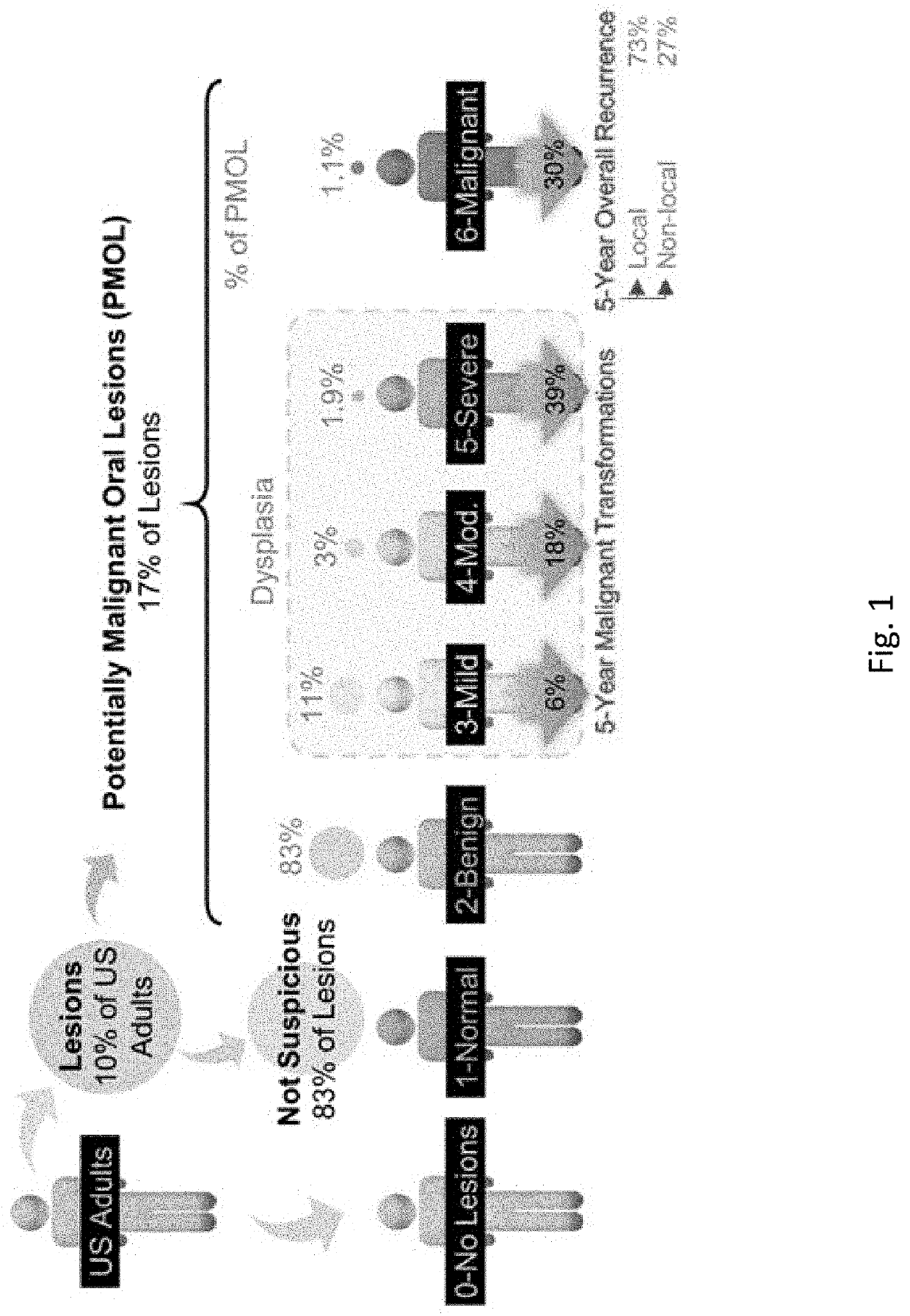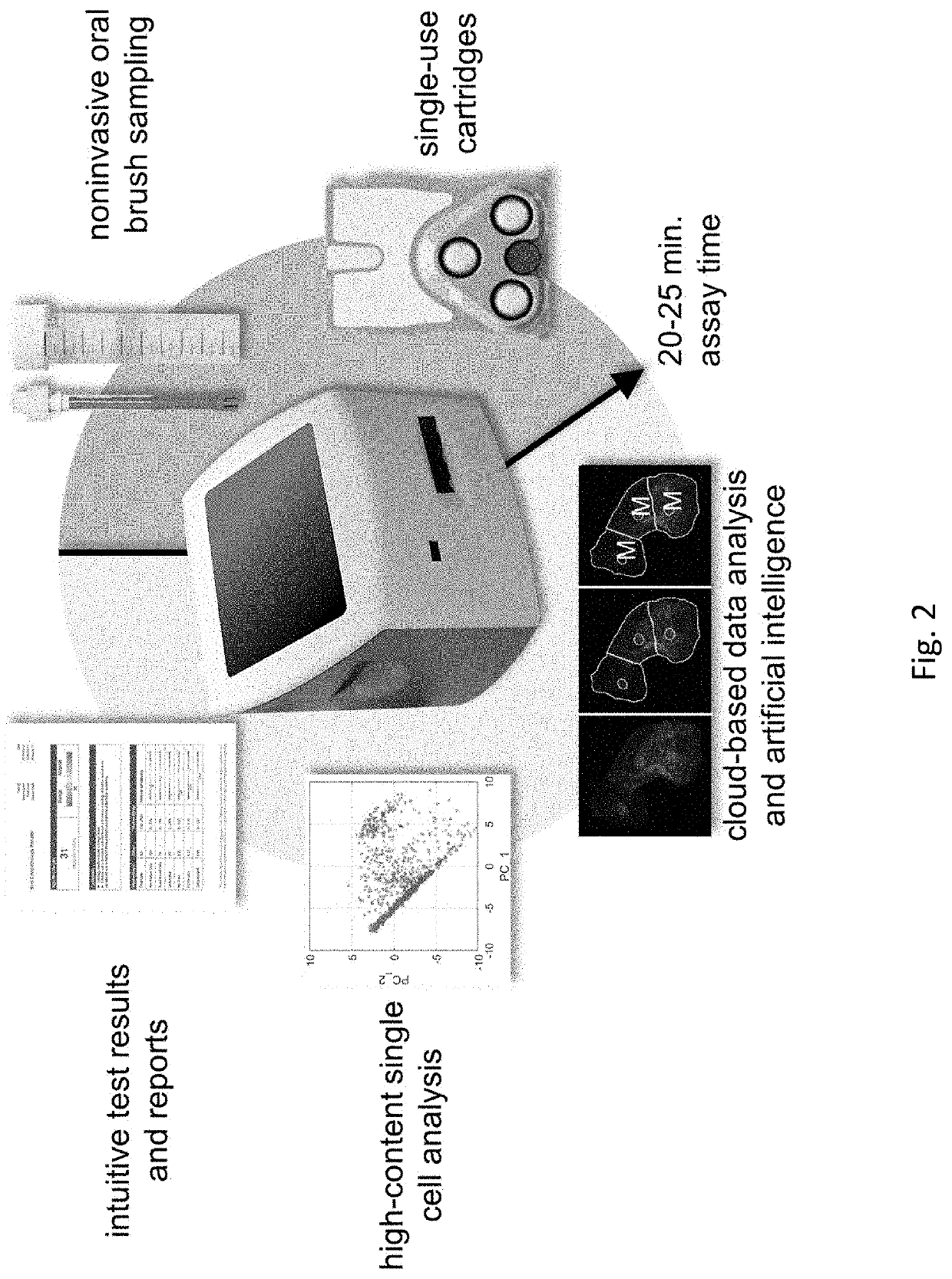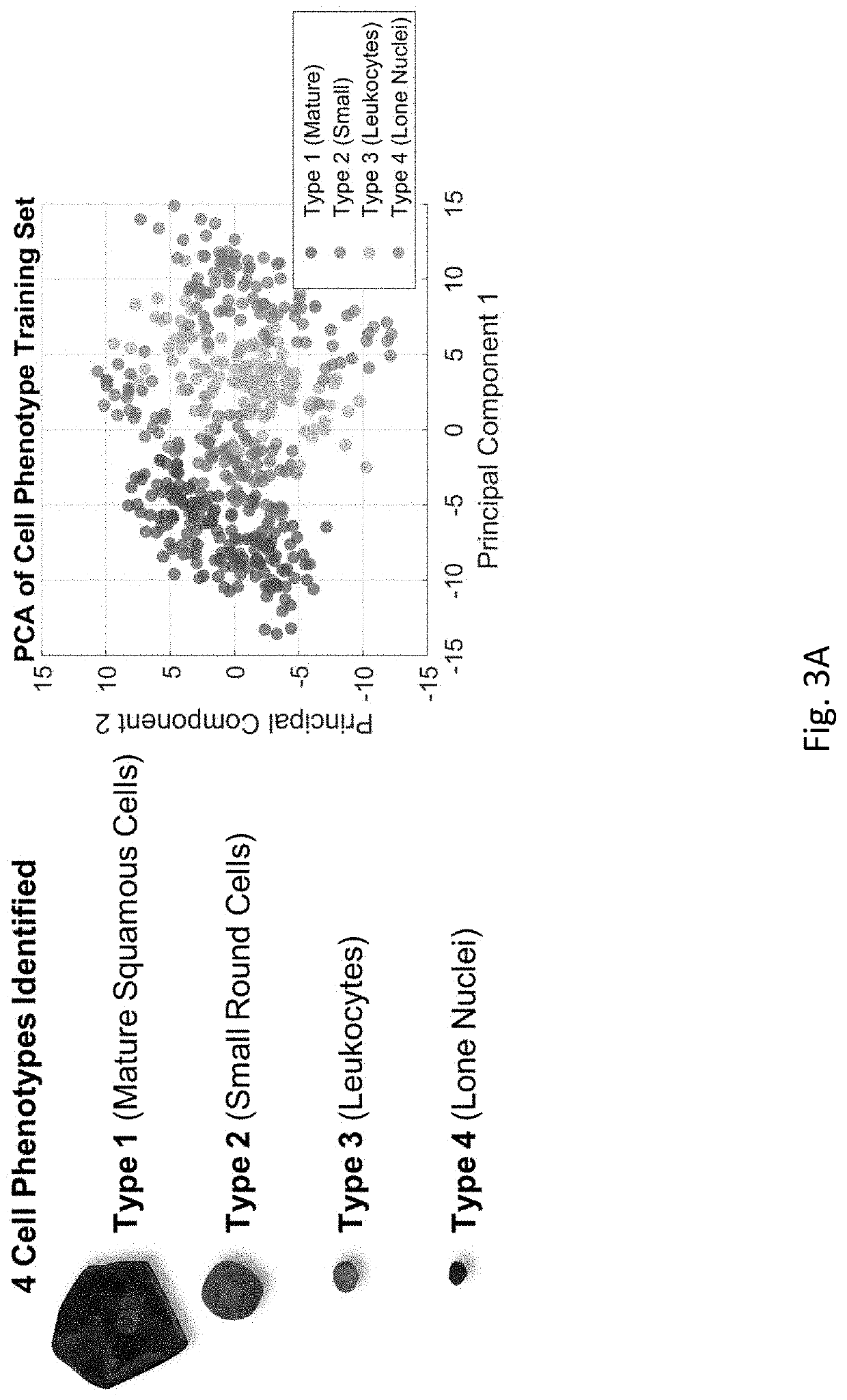Screening and Assessment of Potentially Malignant Oral Lesions
a potentially malignant oral and tumor technology, applied in the field of screening and assessment of potentially malignant oral lesions, can solve the problems of underestimating the severity of oed, insufficient accuracy of vital staining and visualization adjuncts (e.g., autofluorescence and tissue reflectance), and insufficient accuracy to be recommended for use as lesion triage tools
- Summary
- Abstract
- Description
- Claims
- Application Information
AI Technical Summary
Benefits of technology
Problems solved by technology
Method used
Image
Examples
experimental examples
[0119]The invention is further described in detail by reference to the following experimental examples. These examples are provided for purposes of illustration only, and are not intended to be limiting unless otherwise specified. Thus, the invention should in no way be construed as being limited to the following examples, but rather, should be construed to encompass any and all variations which become evident as a result of the teaching provided herein.
[0120]Without further description, it is believed that one of ordinary skill in the art can, using the preceding description and the following illustrative examples, make and utilize the present invention and practice the claimed methods. The following working examples therefore are not to be construed as limiting in any way the remainder of the disclosure.
example 1
[0121]Effective detection and monitoring of potentially malignant oral lesions (PMOL) are critical to identifying early stage cancer and improving outcomes. Described herein are cytopathology tools including machine learning algorithms, clinical algorithms, and test reports developed to assist pathologists and clinicians with PMOL evaluation. Data were acquired from a multi-site clinical validation study of 999 subjects with PMOLs and oral squamous cell carcinoma (OSCC) using a cytology-on-a-chip approach. A machine learning model was trained to recognize and quantify the distributions of four cell phenotypes. A least absolute shrinkage and selection operator (lasso) logistic regression model was trained to distinguish PMOLs and cancer across a spectrum of histopathologic diagnoses ranging from benign, to increasing grades of oral epithelial dysplasia (OED), to OSCC using demographics, lesion characteristics, and cell phenotypes. Cytopathology software was developed to assist pathol...
example 2
[0180]Traditional clinical observations including lesion size and appearance lack sufficient information content to afford reliable early disease detection on a consistent basis. Most prior research methodologies focus on precancerous vs. malignant lesions and do not consider multiple alternative histopathological endpoints, resulting in over optimistic expectations for practical clinical implementation of cytology. New cytology tools for use at the point of care have the potential to gather new precision lesion diagnostic information with a numerical index can provide options for oral lesion management not previously practical.
[0181]It is shown herein that data fusion opportunities yield information with new insights into lesion disease risk. For example it is demonstrated herein that nuclear actin outperforms lesion appearance metrics, and that aggregate metrics fused into single diagnostic model yields higher diagnostic accuracy that traditional metrics based on lesion appearance...
PUM
 Login to View More
Login to View More Abstract
Description
Claims
Application Information
 Login to View More
Login to View More - R&D
- Intellectual Property
- Life Sciences
- Materials
- Tech Scout
- Unparalleled Data Quality
- Higher Quality Content
- 60% Fewer Hallucinations
Browse by: Latest US Patents, China's latest patents, Technical Efficacy Thesaurus, Application Domain, Technology Topic, Popular Technical Reports.
© 2025 PatSnap. All rights reserved.Legal|Privacy policy|Modern Slavery Act Transparency Statement|Sitemap|About US| Contact US: help@patsnap.com



